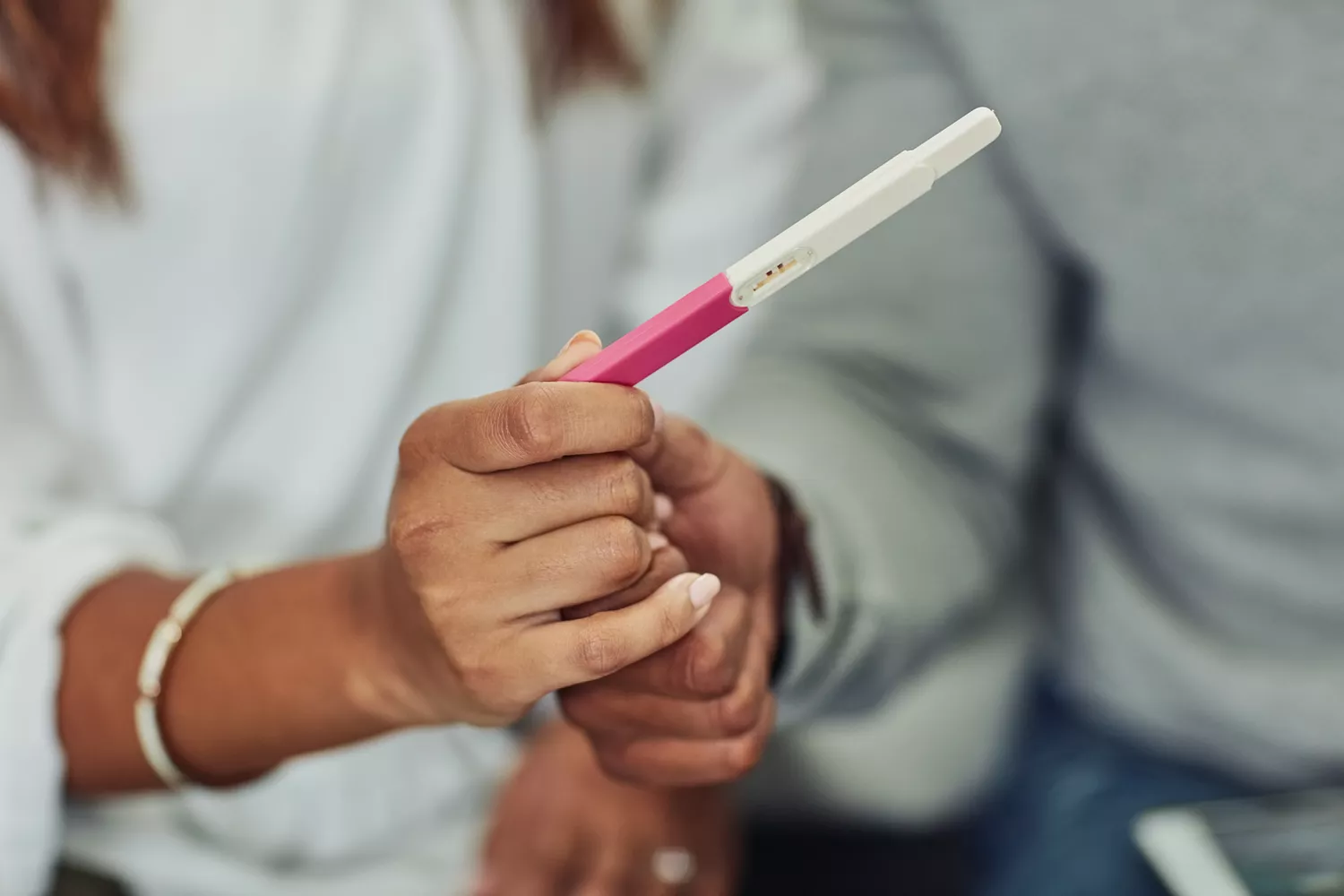What is amniocentesis?


An amniocentesis–sometimes called amnio–is a type of prenatal test used primarily to diagnose genetic abnormalities and birth defects, as well as neural tube defects. You’ll have the information you need to make informed decisions about your baby’s well-being and pregnancy.
“Practically-speaking, [an amniocentesis] involves placing a thin needle in the sac around [your baby], usually while watching on ultrasound for precision and safety, and then removing a small amount of amniotic fluid,” explains Amber Samuel, M.D., M.B.A., F.A.C.O.G., a board-certified maternal fetal specialist and medical director for Obstetrix-Maternal-Fetal Medicine Specialists of Houston.
The amniotic liquid is the fluid that surrounds your child during pregnancy. It contains some genetically-coded fetal cells.
You may wonder if an amniocentesis is right for you, if the test is safe, and why it’s done. You will find answers to all of these questions as we examine the accuracy and safety of amniocentesis.
What is amniocentesis?
Amniocentesis, also known as prenatal amniocentesis, is usually performed between 15 to 20 weeks of pregnancy. The amniotic liquid is tested to diagnose genetic disorders or birth defects.
Amniocentesis: Why do we perform it?
According to Dr. Samuel, the most common reason for amniocentesis, is a suspicion of a genetic or foetal abnormality. This is usually due to abnormal results from non-invasive blood tests or abnormalities seen in prenatal ultrasonography.
Amniocentesis can be used to diagnose:
- Chromosomal Disorders caused by extra, missing or damaged chromosomes. This includes trisomy 13, (Patau Syndrome), trisomy 18, (Edwards Syndrome), trisomy 21, (Down syndrome), as well as Turner syndrome.
- Genetic disordersresulting in gene mutations such as Tay-Sachs and Tay-Sachs diseases, cystic fibrosis or sickle cell disease.
- Defects of the neural tube including spina bifida, anencephaly and other defects.
A prenatal amnio can also be used to check for Rh disease and certain infections. Your doctor may also order an amnio in order to treat Polyhydramnios.
Prenatal Screening Tests vs. Amniocentesis
Amniocentesis, also known as a prenatal diagnosis test, is used to determine if your baby suffers from a genetic disorder. Prenatal screening tests such as blood tests and ultrasounds can only determine if your child is at a higher riskof having a genetic disorder.
Amniocentesis used to be done in the past to check on your baby’s lungs, but is rarely performed for this purpose anymore, according Sammy Tabbah M.D. a maternal-fetal medicine doctor with OhioHealth Maternal Fetal Medicine Group. The reason for this is that the delivery indicators have improved over the years and we make the decision regardless of what the test shows.
What is NIPT or noninvasive prenatal testing?
Amniocentesis: Who gets it?
ACOG recommends to that all pregnant women be offered the opportunity to have prenatal tests like amniocentesis. Amniocentesis is recommended for people with the following conditions.
- Maternal age is advanced after 35 years of age, as the risk for chromosomal conditions increases.
- Family history of genetic disorders
- Previous pregnancy or child with a birth deformity
- Prenatal abnormalities: Test results
- Unusual Ultrasound Findings
Michael D. Cackovic, MD is a maternal-fetal medicine specialist and clinical associate professor in Obstetrics and Gynecology, at The Ohio State University Wexner medical Center.
Dr. Cackovic says that parents sometimes wait until the baby is in danger and then decide to test it. It’s a personal decision that is all about gaining important and useful information regarding the pregnancy.
The HTML0 Guide to Baby Ultrasound Exams
Amniocentesis: When is it Performed?
It is usually performed between 15 to 20 weeks. The test should not be performed before 15 weeks of pregnancy. It could harm the developing baby. 2
Amniocentesis is possible up to the time of delivery. Dr. Tabbah says that there is no upper limit to amniocentesis. You just need to give yourself enough time to get the results or information, which usually takes one to two week before delivery. Amniocentesis is possible at any stage if an infection is suspected.
What Happens during an Amniocentesis?
You will be scheduled to undergo the procedure once you have agreed to the amniocentesis. Amniocentesis is performed by a perinatologist who specializes in maternal and fetal medicine or a general OB/GYN. You can expect to see the following during an amniocentesis, although every practitioner will be different.
- On the exam table, you will be asked lie down.
- Most providers do not apply numbing medication to the abdomen. The numbing medicine may be more painful than the actual procedure. You can discuss this with your provider if you wish.
- The ultrasound transducer can show the location of the baby and placenta so that the provider may find a pocket where both are.
- Your abdomen will be cleaned with antiseptic.
- A thin needle is inserted in your abdomen and through your uterus to remove a small amount (about 1 ounce) of amniotic liquid.
- After the sample has been removed, the heartbeat of your baby will be checked using ultrasound.
According to The Cleveland Clinic, the entire procedure should take around 30 minutes. However, the needle will only be inside the body for a maximum of one or two minutes.
How does amniocentesis feel?
According to Dr. Cackovic, many people don’t feel the needle when it is inserted into the skin. When the needle is inserted into the uterus it can feel like a small shot in the buttocks. Others feel pressure, while some patients experience a cramping sensation.
What to expect after amniocentesis
Some people experience cramping after amniocentesis. Michael Platt Faulkner D.O. is an OB/GYN with St. Elizabeth Healthcare. The majority of people are able to recover with the help of over-the-counter medications and rest after the procedure.
Dr. Tabbah says that you’ll probably be advised to refrain from any strenuous exercise or physical activity in the following 24 hours. Dr. Tabbah says that he usually tells families to rest and take the day off the day before the procedure. The next day, they can resume their normal activities.
It is also important to watch out for any unusual side effects. These are very rare. You should let your doctor know if, for example, you have any contractions. After amniocentesis, you should also contact your provider if you experience any of the following symptoms:
- Spotting or bleeding
- Fluids leaking or gushing out
- Pain or cramping in the abdomen
- Fever
- Changes in discharge
- Different movements of your baby
Your Pregnancy Symptoms Week by Week
Amniocentesis: Risks
Amniocentesis, while a safe, accurate, and reliable procedure, does have some risks.
- Miscarriage. After amnio, there is a very small chance of miscarriage. ( less that 1%) The risk of miscarriage is similar to that in cases where amniocentesis was not performed.
- Uterine infection
- Amniotic fluid leaking occurs in approximately 2% of cases 3
- 3
- Your baby can be infected with a bloodborne infection, such as HIV or hepatitis.
- Preterm labor. Preterm labor.
- Rh Sensitization. When the blood of the unborn baby enters the bloodstream of a pregnant woman, complications may occur.
- Rare: Baby needle injury
Dr. Samuel says that it is difficult to assess the risks of this procedure because women who undergo the procedure are more likely than others to lose their pregnancy due to the initial reason for the procedure. There are also cases where the water breaks (also rare), but the small opening can seal over time, allowing the pregnancy to continue.
Amniocentesis: How to prepare
Amniocentesis is not a procedure that requires special preparation. You can eat or drink normally before the procedure. However, if you take blood-thinning medication, it may be advised that you do not take them the day of.
Coping with anxiety around the procedure and possible outcomes is the biggest challenge for some people. Dr. Cackovic assures his patients that amniocentesis can be a safe procedure. It will give you the chance to rule out any bad things, and allow you time for you to accept what you weren’t expecting. This is important because you can have a more enjoyable second half of your pregnancy.
Why Do I Get Cramps During Pregnancy?
Amniocentesis Results: Interpretation
The sample will be sent to the lab after your amnio. The fetal cells are cultured in amniotic liquid and their chromosomes analyzed. You’ll usually learn the results within 10-14 days. Samuel says that it depends on the study. Sometimes preliminary results are available within 48 hours, but sometimes it can take up to several weeks.
How accurate is amniocentesis?
Amniocentesis can diagnose genetic abnormalities and birth defects with a 99% accuracy, but it does not indicate their severity. Amniocentesis cannot diagnose every genetic disease or birth defect because some conditions are not detectable prenatally.
You may receive results after an amniocentesis.
- Normal A normal result means that there was no evidence found of the condition for which your baby had been screened.
- Abnormal An abnormal result means the test detected a genetic variation in your pregnancy. Your health care provider will then discuss the results as well as your options.
- Uncertain This indicates that there was a genetic variation, but the impact of this difference on your pregnancy has not been determined. Your doctor will talk to you about the next steps and may suggest additional testing.
Try not to think about the “what-ifs” while you await the results. There is a good chance that your test results will be normal. Dr. Cackovic says that his group performs about 50 amnios per day, and only 2% of them have abnormal results.
Top 13 Fears of Pregnancy (and Why you Shouldn’t Worry).
What is the difference between Amniocentesis and CVS?
Chorionic Villus Sampling (CVS) a diagnostic test which evaluates placental cells that have the same genes that the fetus has. CVS has the advantage that it can be done during the first trimester. This is usually between 10 and 14 weeks.
CVS is able to detect genetic disorders, chromosomal anomalies and other abnormalities. However, it cannot provide information on neural tube defects. You may still require a blood screening at 16-18 weeks to check for neural tube defects.










